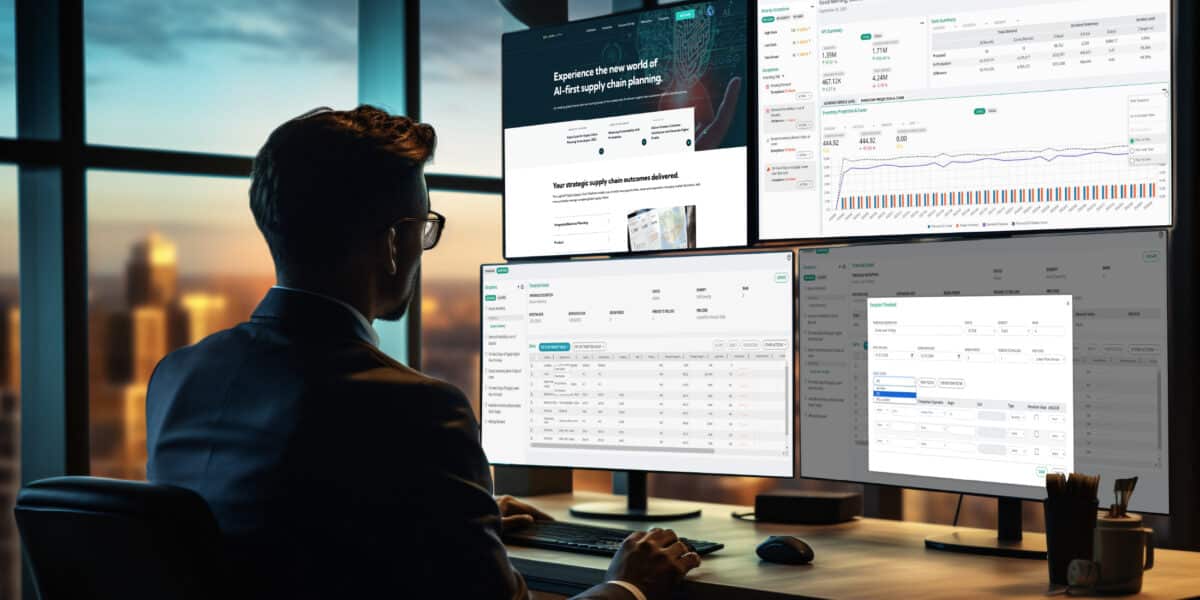
When the United States had a massive infant formula shortage, families were under duress, especially those with babies under one. Anyone who has provided care to an infant knows that baby formula is as much an essential as toilet paper. The need for more resilient supply chains and better demand forecasting was becoming more essential.
With the rise of companies looking to implement AI into their supply chains, more accurate forecasts are within reach. But how did we get here in the first place?
How did the infant formula supply chain crisis happen?
Remember the toilet paper crisis a few years ago? The baby-formula shortage is perhaps only more dire for families directly impacted. In a crunch, the brand of toilet paper hardly matters to most, but the same cannot be said of baby formula. A crucial product meant to substitute a mother’s milk that has a unique composition that is significantly difficult to substitute and risky to replicate at home. This shortage is cause a frenzy among parents in the US, some driving for hours only to find empty shelves in different neighborhoods.

The FDA closed a manufacturing facility in 2022 due to bacteria-related infant deaths and recalled products. This added to the already lingering short-supply of baby formula that started at the beginning of the pandemic when parents of infants hoarded cans of formula, just like others did with toilet paper. Finally, US trade policies, including high import tariffs and stringent labeling requirements, are prohibitive towards increasing the imports of baby formula to the US in the short horizon. Even imports from neighboring Canada are subject to tariffs as high as 17.5% under the Rock-A-Bye trade restrictions.
What can supply chain planning professionals learn from this situation?
Much has been said about over-reliance on global supply chains and the need to build more self-reliant localized supply sources. But the baby formula crisis in the US built a strong case for more flexible supply chains, especially for essential goods. Over-reliance on local supply can wreak significant havoc if not built to sustain under stress. This is a moment of truth where we see that historical demand forecasting models built upon past data do not work under rapidly changing global factors. Planners need AI based tools that can overlay ground realities on to historic data. In hindsight, the baby-formula crisis was brewing for a while. Smart use of POS sales data would have shown parents’ hoarding behaviors for baby formula and helped eliminate false peaks and toughs in demand. The ability to segment demand by source of supply would have immediately caught the impact of a plant closure.
Planners’ visibility to trade policies may have helped with alternate sourcing plans ahead of plant closure. In today’s uber-connected world where data is omni-present, we need to build outside-in forecasting tools to prevent organizations from being caught off-guard when supply-chain interruptions are staring them in the face.
What did we learn from the baby formula shortage?
- Planners need visibility into critical supply decisions and policies and AI based tools that can help them build scenarios that impact category level demand of these essentials like baby formula.
- Planners need scalable and standardized mechanisms to overlay ground realities with history in order to hedge against supply disruptions at the network level. There is a need for more resilient and transparent supply chain for essentials.
- Organizations need to push for more liberal trade policies for essential goods such as baby formula, or at a minimum, exception clauses that loosen tariffs and label requirements at times of crisis.
The ecosystem in which US families with young children live is already under duress due to rising costs, unavailability of childcare, unaffordable healthcare. About half the baby formula consumption in the United States is by low-income families. This can surely be one less worry for struggling parents with more deliberate forecasting and policy measures which can be elastic between local and global supply chains.
Planners need visibility into critical supply decisions and policies and AI based solutions that can help them build scenarios that impact category level demand of these essentials like baby formula.
Logility’s AI-first demand forecasting solution, DemandAI+ can help to avoid such drastic situations using more than just historic data. Read more about end-to-end supply chain planning on our website. You can also access longer form, in depth content in our executive briefs.
What is Driver-Based Forecasting for Demand Planning? Find out in this blog from one of our experts
Learn more


